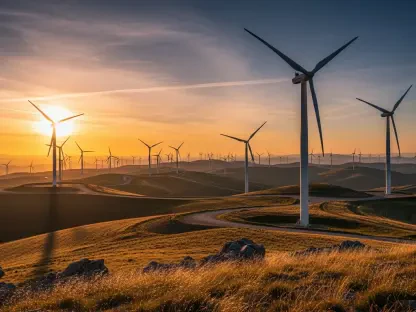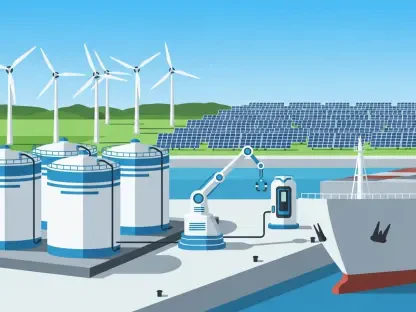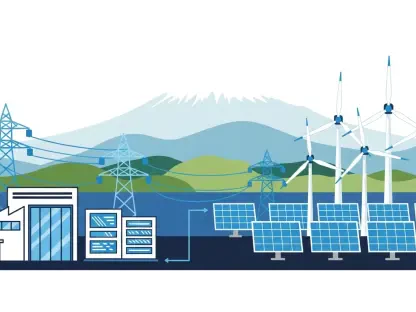Alaska stands at the brink of an energy revolution with the newly enacted Senate Bill 152, commonly known as the SAVE Act. Signed into law by Governor Mike Dunleavy, this legislation aims to democratize access to renewable energy and foster economic prosperity in the state. By enabling renters, businesses, and other traditionally excluded groups to participate in the clean energy transition, the SAVE Act holds promise for a sustainable and economically vibrant future in Alaska.
Democratizing Renewable Energy Access
Expanding Beyond Homeowners
The SAVE Act seeks to broaden the scope of who can benefit from renewable energy investments. Previously, only homeowners who could afford individual solar installations had access to these advantages. This new legislation changes that by allowing other groups such as renters and businesses to invest in shared community renewable energy facilities, making clean energy benefits more inclusive.
The significance of this shift cannot be overstated, as it opens doors for a wide range of Alaskans who were previously left out of renewable energy initiatives. For example, renters often do not have the authority to install solar panels on their residences, and business owners may find individual solar solutions economically unfeasible. The SAVE Act creates a framework that not only includes these groups but actively encourages their participation, fostering a more inclusive renewable energy ecosystem. This expanded access is anticipated to trigger a ripple effect, driving both environmental benefits and economic growth across various sectors.
Community Solar Projects
Community solar projects serve as a linchpin in this democratized framework. They enable participants to subscribe to a shared energy facility, like a solar farm, and reduce their monthly energy bills. By creating avenues for people without suitable properties for solar panels, community solar expands the reach of renewable energy.
Through these projects, a wider segment of the population can now reap the benefits of renewable energy without the need for individual installations. Participants in community solar projects can subscribe to a portion of the electricity generated by the shared facility, potentially seeing significant reductions in their energy costs. This collective model also allows for economies of scale, reducing the overall cost per kilowatt-hour of renewable energy produced. Additionally, community solar projects often involve cooperative ownership structures, empowering local communities and providing them with a direct stake in their energy future.
Economic and Environmental Benefits
Gov. Dunleavy’s Solar Investment
Governor Dunleavy’s personal investment in solar panels at his homestead exemplifies the tangible benefits of renewable energy. His setup showcases not only the potential for substantial savings on electricity bills but also the reduction of carbon emissions. This individual action serves as a proof-of-concept for the broader, community-based model.
The governor’s commitment sends a powerful message, illustrating that renewable energy solutions are not only viable but can also be financially beneficial. By highlighting his own experiences, Dunleavy underscores the feasibility of transitioning to renewable sources on a larger scale. His initiative aligns with the SAVE Act’s goals by demonstrating the practical and economic advantages of embracing renewable energy, which could serve as a catalyst for wider adoption across the state. Moreover, this personal endorsement from the state’s highest office adds significant credibility to the initiatives set forth by the SAVE Act.
Private Sector Investments
The SAVE Act aims to unlock millions of dollars in private sector investment, potentially propelling Alaska toward significant economic growth. By encouraging private investment in renewable energy, the state can benefit from reduced electricity costs and increased energy security.
Attracting private sector investment is critical for the scalability and long-term sustainability of renewable energy projects. By creating a conducive regulatory environment and offering incentives, the SAVE Act aims to draw substantial financial resources from private entities. This influx of capital can accelerate the development and deployment of renewable energy infrastructure, making it possible to achieve the ambitious targets set by the legislation. Furthermore, as more private companies invest in renewable energy, competition can drive innovation and efficiency, leading to even lower costs and more effective solutions. This symbiotic relationship between public policy and private investment is essential for realizing the full potential of the SAVE Act.
Regulatory Cooperation and Community Engagement
Role of the Regulatory Commission of Alaska
Critical to the success of the SAVE Act is the role of the Regulatory Commission of Alaska (RCA). This body will determine important operational guidelines and compensation structures for community energy facilities. One important consideration is whether the RCA will extend current net metering policies, which could make these projects more financially viable and attractive.
Net metering allows solar owners to be compensated for the energy they generate at the retail rate, thereby making solar investments more appealing. Extending this policy to community energy projects could ensure that participants receive fair compensation, boosting the economic appeal of joining such programs. The RCA’s regulations will be pivotal in establishing a market framework that is both attractive to investors and beneficial to consumers. Transparent and fair compensation structures can drive higher participation rates and ensure that the financial benefits of renewable energy are equitably shared among all participants.
Importance of Public Participation
Public engagement is crucial for the successful implementation of the SAVE Act. Alaskans are encouraged to participate actively in the regulatory process and invest in community projects. By doing so, they can help ensure the equitable distribution of renewable energy benefits and drive down electricity costs across the state.
Active community involvement can ensure that the projects reflect local needs and priorities, making them more sustainable in the long run. Public participation can also enhance the legitimacy and acceptance of renewable energy projects, reducing potential conflicts and fostering a sense of shared ownership. By engaging in the regulatory process, citizens can voice their concerns, offer suggestions, and help shape policies that best serve their communities. This collaborative approach is essential for achieving the equitable implementation of the SAVE Act, ensuring that its benefits reach a broad cross-section of the population.
Bridging the Energy Gap
The Cook Inlet Gas Crisis
Alaska faces a potential crisis with the Cook Inlet gas supply, which threatens to escalate energy costs. Renewable energy sources like solar, wind, and small hydro projects offer an alternative that can extend the lifespan of local gas supplies and mitigate rising costs. The SAVE Act could thus serve as a strategic buffer against such crises.
By diversifying its energy portfolio, Alaska can reduce its reliance on finite and increasingly expensive fossil fuels. This diversification is not only environmentally beneficial but also economically prudent, safeguarding the state against volatile energy markets and supply disruptions. Integrating more renewable energy sources can provide a more stable and predictable energy landscape for Alaskans. The SAVE Act’s emphasis on community energy projects can also help localize energy production, reducing transmission losses and enhancing energy security. In the face of potential gas shortages, these measures can offer a sustainable and resilient energy solution.
Goals and Ambitions
Reflecting on Alaska’s past achievements in renewable energy, the SAVE Act sets an ambitious goal: deploying 50 megawatts of community energy by 2035. This target represents a tripling of the state’s current renewable energy deployment rate, aiming to build significantly on the 16 megawatts of distributed electrical generation through rooftop solar achieved over the last decade.
Achieving these goals will require concerted efforts from all stakeholders, including government agencies, private investors, and the public. The state has already demonstrated its capacity for renewable energy leadership, and the SAVE Act aims to build on this foundation. By setting clear and achievable targets, the legislation provides a roadmap for future development. This ambitious goal underscores the state’s commitment to renewable energy and sets a benchmark for progress, encouraging continuous improvement and innovation in the sector. Meeting these targets will not only enhance Alaska’s energy infrastructure but also contribute significantly to its economic and environmental sustainability.
Harnessing Common Spaces
Transforming Community Spaces
Community energy projects have the potential to turn common spaces like rooftops of schools, apartment buildings, and commercial spaces into productive sites for generating renewable energy. This utilization can democratize energy savings, making the benefits of renewable energy more accessible to a wider population.
Utilizing common spaces for renewable energy production can transform underused areas into valuable assets, contributing to local energy independence and sustainability. These projects can also foster a sense of community by involving local stakeholders in the planning and execution of energy solutions. By making the most of available spaces, community energy projects can maximize the use of existing infrastructure, reducing the need for new land development and minimizing environmental impact. The democratization of energy savings through such projects can ensure that the economic benefits of renewable energy are distributed more equitably, benefiting a broader range of residents.
Vision for the Future
Alaska is on the verge of an energy revolution thanks to the recently enacted Senate Bill 152, widely known as the SAVE Act. Signed into law by Governor Mike Dunleavy, this groundbreaking legislation aims to open up access to renewable energy and stimulate economic growth across the state. The SAVE Act is particularly notable for its inclusive approach, offering renters, businesses, and other groups that were traditionally left out the opportunity to participate in the clean energy transition. By expanding access to sustainable energy options, the SAVE Act holds the potential to foster a greener and economically thriving future for Alaska. This new law not only addresses the energy needs of the present but also paves the way for long-term environmental and economic benefits. It encourages investment in renewable infrastructure, potentially leading to job creation and innovation in the state’s energy sector. As Alaska embraces this transformative legislation, its residents stand to gain from a future where renewable energy is both accessible and beneficial for the local economy.









